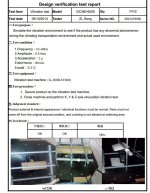neptronix said:
liveforphysics said:
His charger is isolated, so it only requires firmware and enable you to set it's 0-60v range on top of whatever constant voltage source you need if you want to charge higher voltage packs with it.
You can charge any pack that doesn't have an empty to full voltage difference greater than 60v.
Want to charge 30S of RC LiPo? Put a 70V constant voltage supply under this charger, and with only a firmware change you're set.
Are you 100% for sure?
Because series-ing this baby up to a surplus/pulled 48v server power supply would be a golden solution. I mean, those are what.. $10.. $50 at most..
That would be a determining factor on whether this cheapass buys one or not.
The only thing in my life I'm 100% certain of, is that all that currently composes my model of reality (and each individual consciousnesses model of reality) is entirely and completely wrong, paradoxically including the certainty that it's all wrong.
From my best guess, unless there is some technical hardware limitation that I'm not currently accounting for, it seems it would only require a firmware change. The most simple option being entering in a given CV voltage you have in series with it, and all it's same cool functions of measuring energy and power and things would be displayed correctly. An improved option that I have no doubt someone will hack theirs to do would be to leverage some unused A2D pin on the uController to be a kelvin measurement of the voltage at the pack, so it compensates for all charge lead resistive drop along with whatever other voltage supplies you may have in series with it (they wouldn't even need to be regulated supplies that way, the charger could simply control current based on the kelvin voltage input at the battery connection, and compensate as an unregulated supplies voltage sagged under load or whatever).
If you always plugged things in the correct order of operations (always start the CV supply first before connecting to battery!), and then never had the CV supply trip-off for some reason during charging, you wouldn't require additional charger protections.
However, in a world where people do trip over cords and unplug them, or blow fuses and breakers and things, the charger must have protections to prevent from being exposed to full pack voltage. My guess is this is the reason why Justin has seemed hesitant to create the firmware. I know for certain it is possible to make adequate protection to protect the charger in the event of CV supply failure or other issues, and it will likely cost under $10 bucks in components. Likely the cheapest way would be a few well selected TVS diodes, a full charge current capable diode, and perhaps a pair of fuse holders for ultra-fast-blow DC-rated fuses, one on each side of the TVS diode stack, so whatever event may have caused the TVS to clamp can be protected from an event on either side for total protection.



